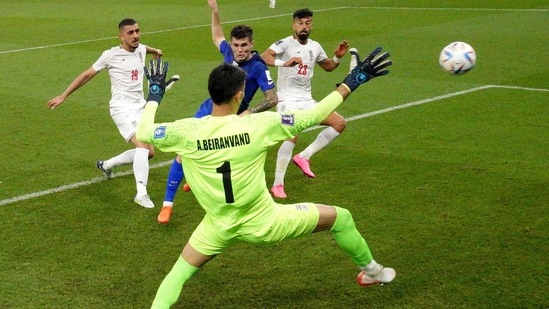
Triple-Dip La Niña persists, prolonging drought and flooding
Published
30 November 2022
Press Release Number:
30/11/2022
Cooling impact is temporary and limited
Geneva, 30 November 2022 - The unusually stubborn and protracted La Niña event is likely to last until the end of the northern hemisphere winter/southern hemisphere summer. The first “triple-dip” La Niña (three consecutive years) of the 21st century will continue to affect temperature and precipitation patterns and exacerbate drought and flooding in different parts of the world, according to the World Meteorological Organization (WMO).
The WMO El Niño/La Niña Update indicates about a 75% chance that La Niña will persist during December-February 2022/2023 and 60% chance during January-March 2023.
There is a 55% chance of ENSO-neutral conditions (neither El Niño or La Niña) emerging during February-April 2023, increasing to about 70% during March-May, according to the Update, which is based on input from experts and forecast models around the world.
It is only the third time since 1950 that there has been a triple-dip La Niña.
La Niña refers to the large-scale cooling of ocean surface temperatures in the central and eastern equatorial Pacific Ocean, coupled with changes in the tropical atmospheric circulation, namely winds, pressure and rainfall. It usually has the opposite impacts on weather and climate as El Niño, which is the warm phase of the so-called El Niño Southern Oscillation (ENSO).
La Niña is a natural phenomenon. But it is taking place against a background of human-induced climate change, which is increasing global temperatures, making our weather more extreme and affecting seasonal rainfall patterns.

Humanitarian crisis
“The tropical Pacific has been in a La Niña state, with short interruptions, since September 2020 – but this has only had a limited and temporary cooling impact on global temperatures,” said WMO Secretary-General Prof. Petteri Taalas. “The past eight years are set to be the hottest on record and sea level rise and ocean warming has accelerated.”
Despite La Niña, both 2022 and 2021 were warmer than any year prior to 2015.
“This persistent La Niña event is prolonging drought and flood conditions in affected regions. The international community is especially concerned about the unfolding humanitarian catastrophe for millions of people in the Horn of Africa, driven by the longest and most severe drought in recent history,” said Prof. Taalas.
A multi-agency alert for the Horn of Africa recently warned that a 5th consecutive season of drought has been set in motion by a poor start to October – December rains. WMO was one of the contributors to the alert, which cautioned that below-average rainfall is also considered likely during the March–May 2023 rainy season.
Already, more than 20 million people are highly food insecure in Kenya, Somalia and Ethiopia and some parts of Somalia may face the risk of famine by the end of the year.
“WMO will continue to provide tailored information to the humanitarian sector and to support sensitive sectors like agriculture, food security, health and disaster risk reduction. WMO is also implementing a new action plan, presented at COP27, to ensure that everyone should have access to early warning systems in the next five years to protect them against hazards related to our weather, climate and water,” said Prof. Taalas.
Precipitation patterns in many regions this year have born the hallmarks of La Niña: drier than usual conditions in Patagonia in South America and southwest North America, as well as East Africa, according to WMO’s provisional State of the Global Climate 2022 report.
It has been wetter than usual in Southern Africa, northern South America, the maritime continent and eastern Australia. More intense and longer monsoon rainfall in southeast Asia is associated with La Niña. Thus, Pakistan experienced devastating rains in July and August.
Global Seasonal Climate outlook
El Niño and La Niña are major – but not the only - drivers of the Earth’s climate system.
In addition to the long-established ENSO Update, WMO now also issues regular Global Seasonal Climate Updates (GSCU), which incorporate influences of the other major climate drivers such as the North Atlantic Oscillation, the Arctic Oscillation and the Indian Ocean Dipole.
The ENSO and Global Seasonal Climate Updates are based on forecasts from WMO Global Producing Centres of Long-Range Forecasts and are available to support governments, the United Nations, decision-makers and stakeholders in climate sensitive sectors to mobilize preparations and protect lives and livelihoods.
Despite the stubborn La Niña in the equatorial central and eastern Pacific, widespread warmer than-average sea-surface temperatures elsewhere are predicted to dominate the forecast of air temperatures for December to February 2022/2023. This will contribute to above normal temperatures over land areas in the Northern Hemisphere except for north-western North America. The largest increase in probabilities for above-normal temperatures are along the Arctic coast of Asia, northern parts of central America, the eastern Maritime Continent, and New Zealand.
Precipitation predictions for December to February are similar to typical rainfall effects of La Niña.

Probabilistic forecasts of surface air temperature and precipitation for the season December-February 2022-2023. The tercile category with the highest forecast probability is indicated by shaded areas. The most likely category for below-normal, above-normal and near-normal is depicted in blue, red and grey shadings respectively for temperature, and orange, green and grey shadings respectively for precipitation. White areas indicate equal chances for all categories in both cases. The baseline period is 1993–2009
The World Meteorological Organization is the United Nations System’s authoritative voice on Weather, Climate and Water


.jpg)



:quality(70)/cloudfront-eu-central-1.images.arcpublishing.com/thenational/ZRXNLBVBJMJPKJLZOYCXSBJCPA.jpg)


